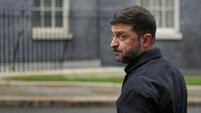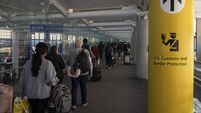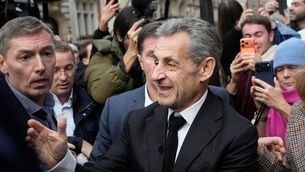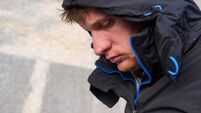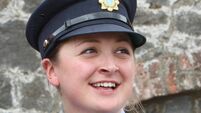Israeli shell caused deaths, says expert
A US-trained military expert today disputed an Israeli claim that it had nothing to do with an explosion that killed eight Palestinian beach-goers in the Gaza Strip last Friday, an incident that has turned a critical spotlight on Israel’s military practices.
Israel released results of its own inquiry, which determined that the blast was not caused by a shell fired from Israel an artillery piece.
The expert, Marc Garlasco of Human Rights Watch, inspected the damage, the shrapnel and the wounds and came to a different conclusion.
“I’m convinced this was from an Israeli shell,” Garlasco said today.
He said the main question still open is where it came from and when – was it fired by an Israeli artillery piece, as Palestinians charge, or was it buried in the sand, either on purpose by militants, as Israel alleges, or left over from an earlier attack?
Garlasco was the first independent expert to examine the scene, though Israel has doubts about his conclusions and about his human rights group.
He was in Gaza doing research for the human rights group when the explosion killed the eight people last Friday afternoon.
Garlasco is a former intelligence specialist battle damage assessment officer for the Pentagon who has studied conflicts in Bosnia and Iraq.
He rankled the Israeli government with a highly critical HRW report on destruction of houses in the Rafah refugee camp in Gaza in 2004. Israeli officials consider the human rights group biased in favour of the Palestinians.
Israeli analyst Gerald Steinberg, who heads a watchdog group called NGO Monitor, charged that Garlasco is not a credible expert, and Human Rights Watch officials have “a long and carefully documented history of exploiting human rights claims to promote a clear anti-Israel political and ideological bias.”
Garlasco said he concluded the explosion was caused by a 155mm shell of the type Israel uses based on his own inspection. He viewed shrapnel collected from the scene by a Palestinian ordinance disposal unit, and in X-rays of Palestinians wounded in the blast.
The shrapnel was thick, typical of military shells, compared to the thin, sheet metal-like shrapnel from homemade Palestinian rockets, Garlasco said.
But Garlasco said his best evidence was shrapnel that he himself removed from the upholstery in cushions of a car parked at the scene. Two children were wounded in the car, he said. He said it definitely came from an artillery shell.
Also, the fact that the injuries did not include the loss of legs shows that the explosion was not caused by a mine, Garlasco said.
Israeli army spokesman Captain Jacob Dallal said today that Israel’s inquiry determined that the wounds were “not from Israeli fire and we were able to determine that with an exceptionally high degree of certainty.”
Dallal said Israel could not determine what caused the casualties.
Yesterday, Israeli Defence Minister Amir Peretz presented the results of the Israeli inquiry, using photos and film to show that no shells were fired from land or sea at the time of the explosion.
Dallal said: “The beach area is used by militants, so this is also a battleground. This area is used for terror groups to launch (rockets) on Israel,” noting that a rocket was fired from the area today.
Garlasco said more work needs to be done before a solid conclusion can be drawn. “We’re calling for an independent investigation, since the Israelis are not here to investigate and the Palestinians are incapable of doing it technologically,” he said.
Human Rights Watch hopes to present its findings to Israel in a meeting next week, Garlasco said.







